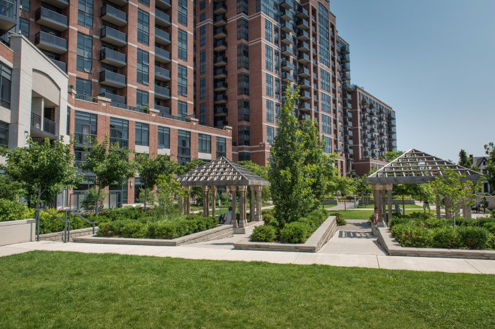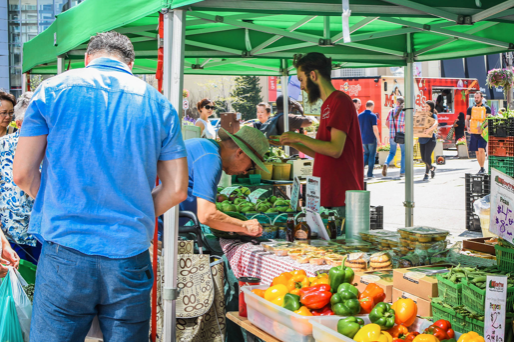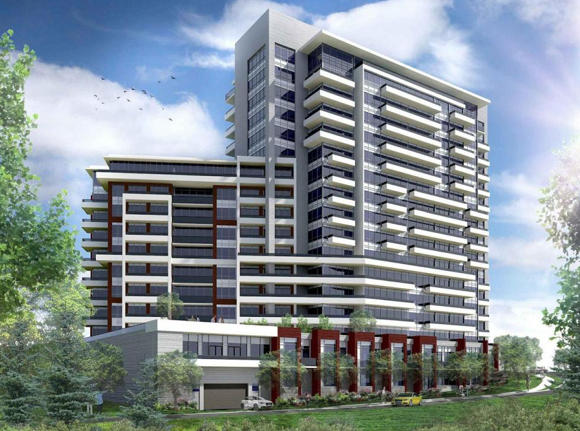How to Prepare to Purchase Your First Home
Buying your first home will most likely be the biggest
purchase you’ll ever make. Many people take a long time to make the leap
because they're uncertain about their finances, credit ratings, the general
affordability or how the whole process works.
Since Options for Homes has been developing condo
communities and helping first time home buyers realize the dream of home
ownership for 23 years we thought we’d share some of our knowledge and
experience, to help you move forward sooner towards your home ownership
goals.
1. GET CLEAR ON YOUR
FINANCES
We can’t stress enough how important it is to get clear on how much
money you have coming in, and how much you have going out. Knowing where you
stand with your finances is a crucial first step but it’s not one to be afraid
of or to avoid. Information is power and having a clear picture of your current
finances up front will give you the information you need to make a solid plan
to purchase your first home.
Write down the honest details of your financial situation,
including;
Income
1.
Your annual household income from all sources
2.
Any changes you may foresee to your income
3.
Contingency fund, i.e. If your household is made
up of only one income and if something were to change, do you have savings to cover your mortgage payment for 3 – 6 months?
Establishing how stable your income is will help you assess
your ability to afford mortgage payments. It is useful to have an idea of what
your total debt service ratio (TDS) might be. This is usually a percentage that
represents the amount of your annual income required to pay your debts,
including your mortgage. Your total debt service ratio should be less than 40%.
It is not set in stone and calculated slightly differently by different lenders
so be sure to consult with a mortgage lender to determine how that lender will
calculate your TDS.
Debt
Record all debt owing to credit accounts, leases, or other payments and total up
how much you pay monthly to service this debt.
Can you pay off this debt? If not, what can you do now to start paying off your
debts? (While not incurring further debt!)
It is definitely not advisable to take on any further debt
if you plan to purchase a home. This includes not applying for any credit
cards, taking on a new car loan or lease, or buying any big ticket items with
credit.
What is Your Credit
Score?
Do you know your Credit
Score? A credit score is a number between 300 and 850 with 850 being the
highest (best) credit rating possible. It is dependent on a number of factors
and lenders will look at your credit score as part of your mortgage application
process. You can learn more about credit scores here.
Most people don’t realize they should be keeping an eye on
their credit score by checking it once or twice a year (but no more frequently
than that as it dips slightly every time you pull it). You can get your current
credit score in minutes, online for free at Borrowell, www.borrowell.com or, for a small fee at
Equifax, www.equifax.ca
A credit score of a minimum of 680 is usually required to get a mortgage pre-approval.
Consult with a mortgage lender for more information about credit scores.
Good News!
One advantage to purchasing a new construction condo is that due to construction
timelines, you may have time to improve your credit rating before you need to
come up with the funds to close on your purchase.
If you have a low credit score or damaged credit, there are
ways to rehabilitate your credit. Get in touch with our partner, Credit
Canada for more information.
Down Payment Funds
Your down payment amount is a crucial factor in purchasing a home. You will
be required to pay a minimum of 5% of the purchase price of your home towards
the down payment. In order to avoid paying CMHC (Canada Mortgage and Housing
Corporation) insurance
premiums, which can cost you thousands of dollars, you will need to make at
least a 20% down payment.
The great news is that at Options for Homes, we offer a down payment
loan of up to 15% to help you
avoid
these premiums and also lower your mortgage payments.
Take some time to consider how you may be able to save more
money to put towards your down payment as this will go a long way in helping
you with affordability!
Funds for Closing
Costs
We recommend you budget for between 2% and 5% of the
purchase price for closing costs on a new construction condo. It is usually
less, but it’s best to have a cushion.
Closing costs may include provincial and municipal land
transfer tax, HST, lawyer fees, title insurance, property taxes, maintenance
fees, home insurance and any adjustments.
First time buyers in Ontario may be eligible for up to
$7,725 in provincial and municipal land transfer tax rebates. They may also be
eligible for a federal tax and HST rebate.
There is also a first time home buyer program designed to
help with affordability called the Home Buyers Program which allows you to use
up to $25,000 of RRSP savings, per person, towards the purchase of a new home.
2. GET A MORTGAGE
PRE-APPROVAL
The next step should be to get a mortgage pre-approval. This
will save you valuable time by clarifying exactly how much you can afford to
pay for a home. It is advisable to shop around for a mortgage. You may want to
consult directly with a traditional bank for your financing needs or, with a
mortgage broker, and preferably both.
There are many different types of mortgage “products” out
there and it takes careful consideration on the part of your mortgage advisor
to help you fin d the best product for you and your family’s unique situation.
The main components of a mortgage to consider are: Interest rate, type (fixed or variable) and term of the mortgage. However, also
very important are the “3 Ps”: Prepayment, Penalties, and Portability.
These last three things can be as important as, or even more
important than the interest rate. For
example, if you think you may inherit a large sum of money in the next year or
two and want to put it toward your mortgage, you may want to ensure that prepayment is an option that is
available to you in your mortgage terms. Or, if you think you may want to or
need to move and sell your home before the mortgage term is up, what will the penalty be? Or, will you be allowed to port (carry over) your mortgage to
another home purchase before the mortgage term is up without penalty?
These are questions that should arise in conversation with
your lending agent or mortgage broker. A
traditional banking will discuss and offer mortgage products specific to that bank,
while a mortgage broker will typically be able to offer mortgage products from
many different lending institutions. The mortgage broker’s fee is typically paid
for by the lender, not you, the borrower.
Once you receive a pre-approval for a mortgage or a
commitment letter from your lender, you can then begin to search for and choose
your new home. It’s important to be clear on the expiry date for your
pre-approval. Typically a mortgage pre-approval is valid for a set amount of
time (for example: 4 months).
It’s also important to note that a “Pre-approval” is not the
same as an Approval! You are pre-approved as a borrower up to a certain amount
of money however, the home you will purchase has not been selected at this
point. The full application process takes place once you have selected a home
to purchase.
Note:
For Options for Home purchasers, our partners at the Bank of Montreal offer a
capped mortgage rate guaranteed for 36 months. TD offers a 24-month guaranteed
mortgage rate, and Meridian offers the same for 18 months.
3. CHOOSE A
HOME!
With a clear understanding of your personal finances and a pre-approval
in place you are now in a position to start shopping for your new home. Now
that you have a good idea of what you can afford, you won’t waste valuable time
looking at homes that are out of your budget. Or perhaps you’ve discovered you
can afford more than you had previously thought! Be careful not to overextend
yourself though. The goal is not to be “house-poor,” but “well-housed”.
When considering how to select your new home, you may
consider some of the following:
Location, proximity to work and leisure activities, access
to highways or public transit, current and planned future neighbourhood
amenities, schools, amount and cost of home maintenance, and the projected
resale value in the future to ensure you are growing equity in your home.
If you’re buying a condominium apartment consider if you
will need parking or a locker. Are you willing to pay higher maintenance fees
to have amenities like a pool and gym? Or do you want to keep costs down and
avoid buildings with extra amenities because you probably won’t use them
anyway? Of course we’re biased at Options since this is what we build and how
we are able to offer the price and the lowest maintenance fees for new condos
in the city.
When you’re in the market for a new home you may wish to
engage a Realtor to help you select homes to view, negotiate and write offers
on your behalf, advise you on the conditional period and connect you with other
resources.
When buying with Options for Homes, we have Purchase
Consultants and a Client Support Team to guide you through the entire process
of selecting a unit, writing and signing the agreement of purchase and sale,
and reviewing and preparing closing documents. Since there is no negotiation on
the price of our new construction condominium units, most purchasers find they
don’t require the services of a real estate agent.
4. MAKE AN OFFER
Once you have selected a home to purchase you will sign a
Purchase Agreement outlining all the terms of the purchase as well as any other
required documentation.
Deposit Funds
When you sign a Purchase Agreement your deposit payment is
due right away. This amount goes towards your down payment on closing and is
considered your show of “good faith” to follow through on the purchase by
paying the balance of the purchase price on the closing date. Initial deposits
are generally 5% of the purchase price. With Options 5% is all you ever need to
put down to purchase. Other developers may require another 5-15% deposit before
closing to complete a purchase.
Cooling Off Period
For a new construction
home or condominium there is a 10-day cooling off period during which time you
may change your mind and back out of the deal, and your deposit will be
returned to you.
When purchasing a resale property, you may be able to
negotiate on the price or, you may be in competition with other buyers. In
either case, there is no cooling off
period when purchasing a resale property. A firm, accepted offer to
purchase a resale property is legal and binding.
5. MOVE IN TO
YOUR NEW HOME!
Closing Day
The big day is finally here! On your closing day your pre-arranged
mortgage funds will be transferred to the vendor to pay the balance of the
amount owing on the purchase of your new home and you will receive the title /
deed to your home. With keys in hand, you’re ready to move in!
There are many things to consider when preparing to buy your
first home. We know it can seem daunting but it is also very exciting. We hope
this guide helps to give you the information you need to begin moving toward
your home ownership goals and to realize “it IS possible.” At Options for
Homes, we are here to help you every step of the way and you can find out more
by attending our free Condos 101
events held twice monthly around the city.













